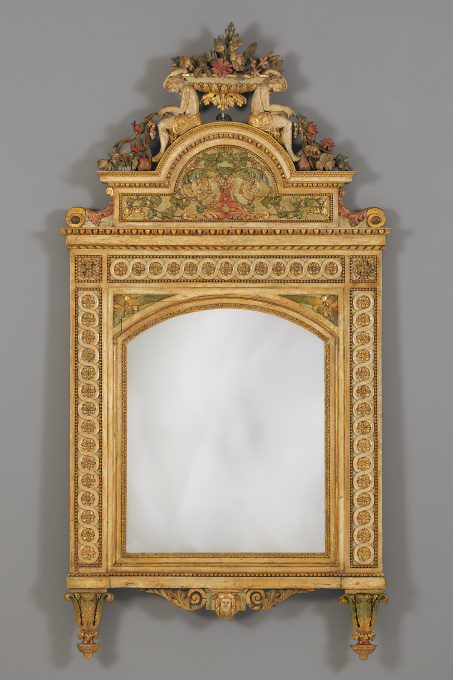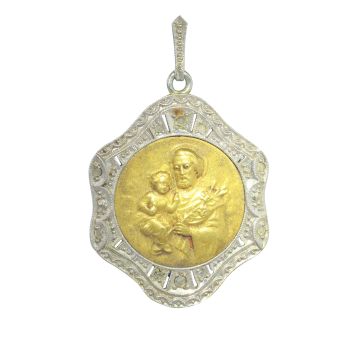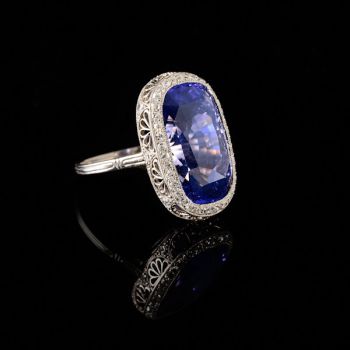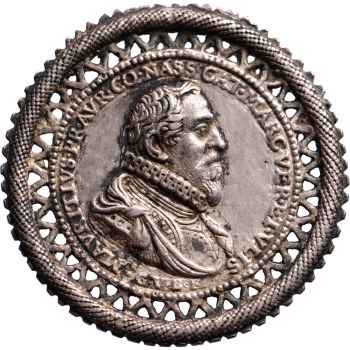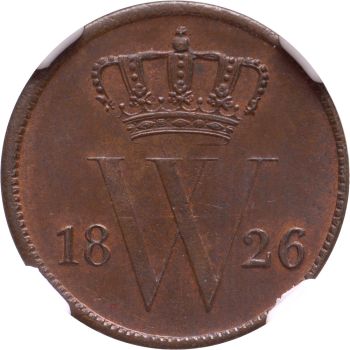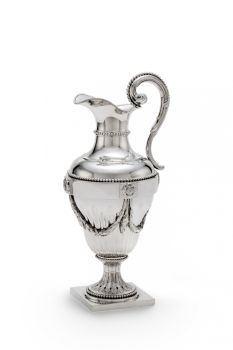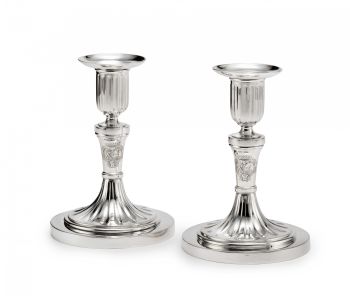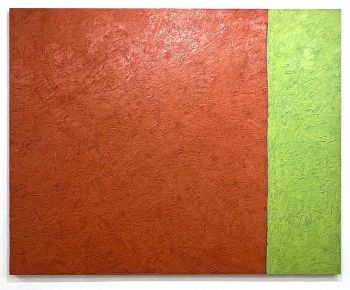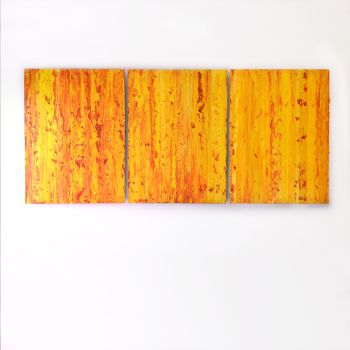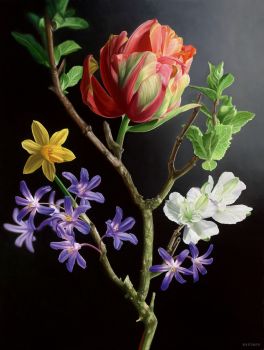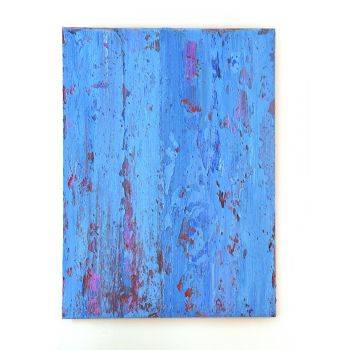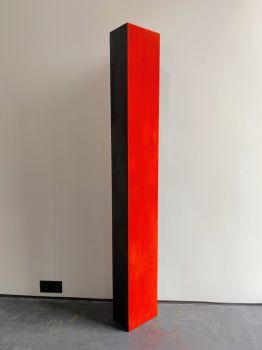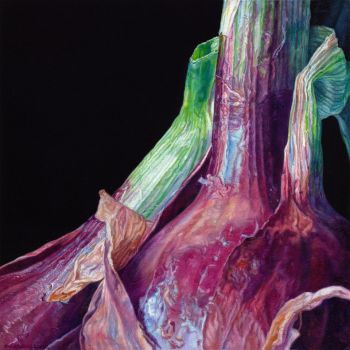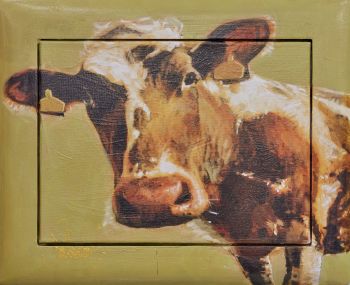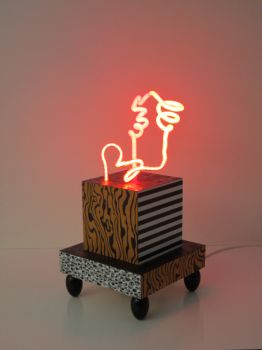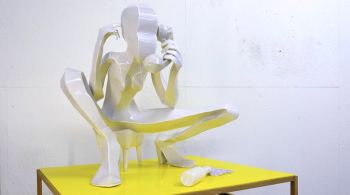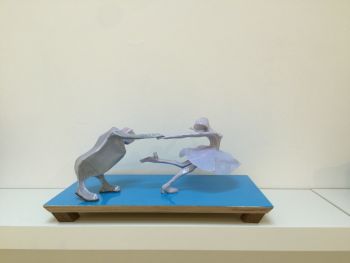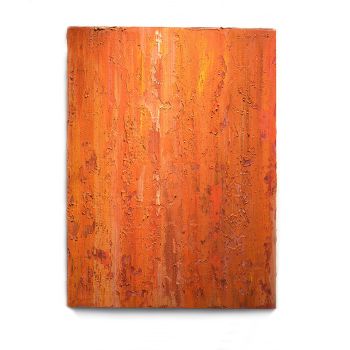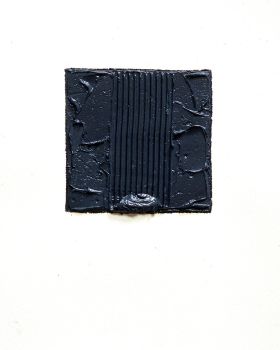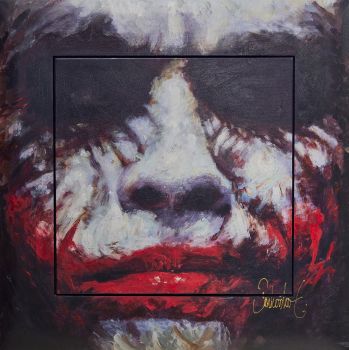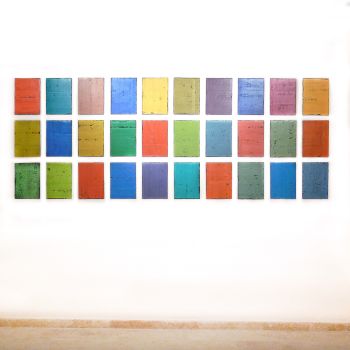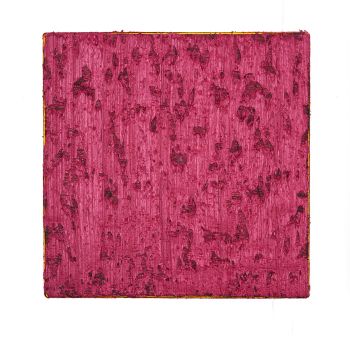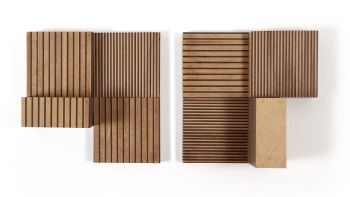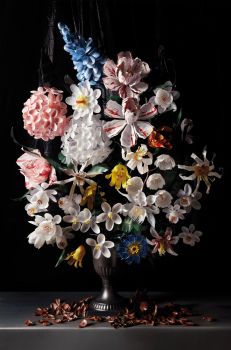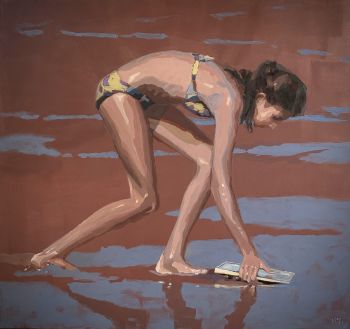An Italian Mirror in the manner of Giuseppe Maria Bonzanigo 1790
Artista Sconosciuto
GiltwoodLegna
169 ⨯ 88 cm
Attualmente non disponibile tramite Gallerease
- A proposito di opere d'arteA finely sculpted elegant Italian mirror. The frame is decorated with entrelacs of rosettes within rectangles with beaded edges. The upper corners are adorned with acorns and oak leaves in square medallions. On the inside an additional frame with an arched top and a beaded edge is mounted. The upper corners are decorated with triangular leaf motifs.
The frieze is decorated with an egg and dart edge and topped with a tympanum adorned with floral branches. The mirror is crowned with two sitting men in a loincloth carrying a flower basket. The figures are each carrying a finely sculpted branch with flowers and fruits.
The bottom is decorated with a skirting in the shape of a portrait medallion flanked by volutes of acanthus. The mirror rests on two conical feet decorated with acanthus leaves.
The mirror is polychromed and parcel gilt with a transparent lacquer finish.
Giuseppe Maria Bonzanigo (1745-1820)
From 1787 onwards, Bonzanigo worked at the Royal court of Savoy. The work that has been attributed to him is considered to be the pinnacle of Italian Neoclassicism. His work is characterized by the distance he took from the traditional Franco-Piedmont tradition of furniture making. Born in Piedmont he moved to Turin in 1773 to work as sculptor, woodcarver and cabinet maker. He soon received the favour and protection of the royal family. He worked from Turin until the French invasion of 1796.
After the defeat of Napoléon in 1815, when the house of Savoy returned to power, he was again appointed cabinet maker of the court. Although his work shows an undeniable French influence, there is no proof of Bonzanigo ever visiting Paris.
Literature:
Giancarlo Ferraris, Guiseppe Maria Bonzanigo e la scultura decorativa in legno a Torino nel periodo Neoclassico (1770-1830), Torino 1991 - A proposito di opere artista
Può succedere che un artista o un creatore sia sconosciuto.
Alcune opere non sono determinate da chi sono state realizzate o sono state realizzate da (un gruppo di) artigiani. Esempi sono statue dell'antichità, mobili, specchi o firme non chiare o leggibili ma anche alcune opere non sono affatto firmate.
Inoltre puoi trovare la seguente descrizione:
•"Attribuito a …." A loro avviso probabilmente opera dell'artista, almeno in parte
•“Studio di ….” o “Officina di” A loro avviso un'opera eseguita nello studio o nella bottega dell'artista, eventualmente sotto la sua supervisione
•“Cerchio di…” A loro avviso un'opera del periodo dell'artista che mostra la sua influenza, strettamente legata all'artista ma non necessariamente al suo allievo
•"Stile di..." o "Seguace di..." A loro avviso un'opera eseguita nello stile dell'artista ma non necessariamente da un allievo; può essere contemporaneo o quasi contemporaneo
•“Modalità di…” A loro avviso un'opera nello stile dell'artista ma di epoca successiva
•"Dopo …." A loro avviso una copia (di qualsiasi data) di un'opera dell'artista
•“Firmato…”, “Datato…” o “Iscritto” A loro avviso l'opera è stata firmata/datata/inscritta dall'artista. L'aggiunta di un punto interrogativo indica un elemento di dubbio
•"Con firma....", "Con data...", "Con iscrizione..." o “Riporta firma/data/iscrizione” a loro avviso la firma/data/iscrizione è stata aggiunta da qualcuno diverso dall'artista
Artwork details
Related artworks
Artista Sconosciuto
Anello edoardiano con zaffiro cangiante1910 - 1920
Prezzo su richiestaAns Hemke-Kuilboer Juwelier & Antiquair
1 - 4 / 12Johannes La (le) Blanck
Un set di ampolle d'argento olandese a doppio uso1786
Prezzo su richiestaJacob J. Roosjen SRI
Reynier de Haan
Un'elegante coppa Monteith in argento olandese Luigi XVI1778
Prezzo su richiestaJacob J. Roosjen SRI
Johannes Schiotling
Un paio di candelieri olandesi in argento1784
Prezzo su richiestaJacob J. Roosjen SRI
1 - 4 / 7Artista Sconosciuto
The Stamford Raffles Secretaires.1800 - 1813
Prezzo su richiestaZebregs & Röell - Fine Art - Antiques
Artista Sconosciuto
UN MODELLO GIAPPONESE DI UN NORIMONO, UN PALANQUIN1650 - 1700
Prezzo su richiestaZebregs & Röell - Fine Art - Antiques
Artista Sconosciuto
UN NETSUKE IN AVORIO DI UN OLANDESE CHE TIENE UN GALLETTO18th century
Prezzo su richiestaZebregs & Röell - Fine Art - Antiques
Artista Sconosciuto
UN CONTENITORE PER DOCUMENTI DELLO SRI LANKA IN ARGENTO DORATO19th century
Prezzo su richiestaZebregs & Röell - Fine Art - Antiques
1 - 4 / 24Artista Sconosciuto
Two Centaurs, France or Italylate 18th
Prezzo su richiestaRobert Schreuder Antiquair
1 - 4 / 24

